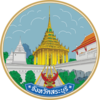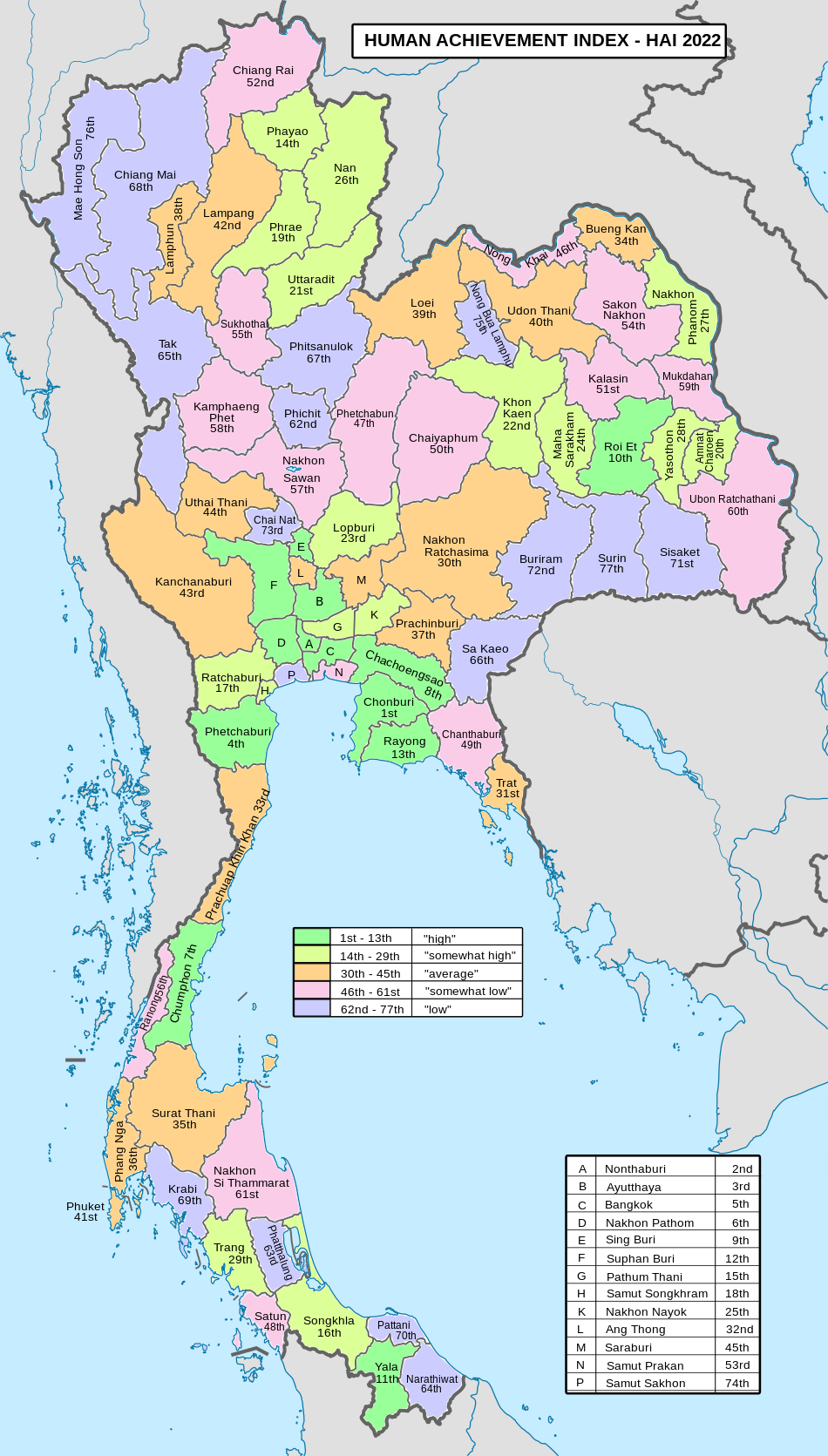|
Saraburi province
Saraburi (Thai: สระบุรี) is one of the central provinces (changwat) of Thailand. Neighboring provinces are (from north clockwise) Lopburi, Nakhon Ratchasima, Nakhon Nayok, Pathum Thani, and Ayutthaya. It is believed to have been constructed in the year 1548 during the reign of King Maha Chakkraphat of Ayutthaya as a centre for recruiting troops. Geography Saraburi is on the east side of the Chao Phraya River valley. The eastern part of the province is covered by high plains and plateaus, while the western part is mostly low flat plains.[citation needed] Saraburi province has 848 km2 (327 sq mi) of forest or 24.2 percent of provincial area.[1] The town, as a gateway to the northeastern region, is 108 km from Bangkok. It occupies an area of 3,577 square kilometres. National parksThere area a total of three national parks, two of which are in region 1 (Saraburi branch) and Khao Yai in region 1 (Prachinburi) of Thailand's protected areas.
HistorySaraburi has been an important city since ancient times.[citation needed] It is assumed to have been established about 1549 during the reign of King Maha Chakkraphat of the Kingdom of Ayutthaya. It is assumed that the king ordered parts of Lopburi and Nakhon Nayok to be combined to set up Saraburi Province with the aim of mobilizing citizens during times of war. From the Ayutthaya period, the story of Saraburi is usually related to battles and wars. As for the origin of the word "Saraburi", it is thought that due to its location near a swamp called "Bueng Nong Ngong", when the town was established a combination of sa ('swamp') and buri ('town') was suggested and the town was named "Saraburi". ClimateSaraburi has a tropical savanna climate, Aw (Climate Classification system of Koppen) The climate is arid with little rain in winter, relatively high temperatures in summer, cool in winter, and rain from May to October, about 70–90 days. The average annual temperature is 28-29 degrees Celsius. Maximum temperatures average 33-34 degrees Celsius and minimum temperature averages 23–24 degrees Celsius. April is the hottest month of the year, while winters are cool in January. Air qualitySaraburi has poor air quality resulting from cement production, chiefly stone crushing. In the area of Na Pra Lan Sub-district there are 133 plants, 17 mining sites, 32 stone mill plants, and 22 stone dressing plants. Air quality in the province frequently exceeds recommended limits for particulates.[6][7] EducationThere are 366 schools. There are a total of 125,255 students at all levels.[citation needed] EconomyIn 2007 Saraburi's population had an average income per capita 214,537 baht per year, making it tenth highest in the country, second in the central provinces. Annual GDP was 129,275 million baht.[citation needed] Religion and cultureIn 2007, Saraburi's population was 89.34 percent Buddhist, 597,138 people. There are 499 temples. There are total of 3,443 monks and 274 neophytes. Muslims number 953 (0.32 percent). There are five Christian churches.[citation needed] SymbolsThe provincial seal shows the temple Wat Phra Buddha Baat. In the 17th century a hunter found a puddle of water which looked like a large footprint. It was declared a footprint of Buddha, and a temple was built around it. Phra Phutthabat means footprint of Buddha. The provincial tree is Lagerstroemia floribunda and the provincial flower is the yellow cotton tree (Cochlospermum regium). The endemic crab, Larnaudia larnaudii is the provincial aquatic animal.[8] Administrative divisionsProvincial government The province is divided into 13 districts (amphoe). The districts are further divided into 111 subdistricts (tambon) and 965 villages (muban). Local governmentAs of 26 November 2019 there are:[9] one Saraburi Provincial Administrative Organization - PAO (ongkan borihan suan changwat) and 38 municipal (thesaban) areas in the province. Saraburi, Kaeng Khoi, Phra Phutthabat and Thap Kwang have town (thesaban mueang) status. Further 34 subdistrict municipalities (thesaban tambon).[2] The non-municipal areas are administered by 70 Subdistrict Administrative Organizations - SAO (ongkan borihan suan tambon). TransportRailSaraburi's main station is Saraburi Railway Station. There is a major rail junction at Kaeng Khoi Junction. RoadSaraburi can be reached via Phahonyothin Road (Highway 1). Mittraphap Road (Highway 2), a main road in the northeastern region. It has a beginning here which is a route that separates from the right side of Phahonyothin Road.[10] HealthThe main hospital of Saraburi is Saraburi Hospital, operated by the Ministry of Public Health. Human achievement index 2022
Since 2003, United Nations Development Programme (UNDP) in Thailand has tracked progress on human development at sub-national level using the Human achievement index (HAI), a composite index covering all the eight key areas of human development. National Economic and Social Development Board (NESDB) has taken over this task since 2017.[3]
Notable people
References
External links
Wikimedia Commons has media related to Saraburi Province. |
||||||||||||||||||||||||||||||||||||||||||||||||||||||||||||||||||||||||||||||||||||||||||||||












